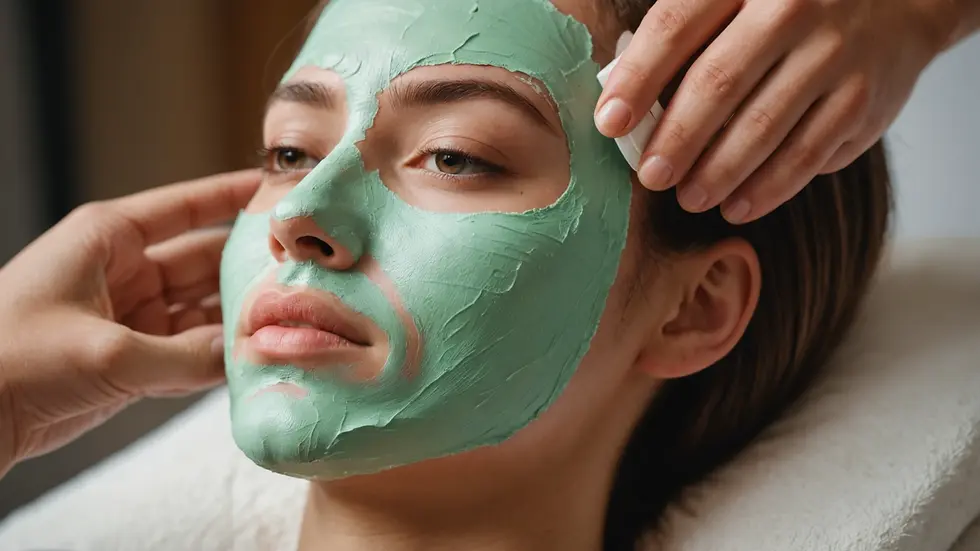Uncovering the Truth: Tackling Juvenile Acne with Advanced Ultrasonic Cleansing and Soothing Skin Care Methods
- Simona Klokočovnik
- 21 feb
- 3 minuten om te lezen
Juvenile acne can be a tough hurdle for many young people. As hormones fluctuate during adolescence, the skin often reacts with unwanted breakouts. This not only affects appearance but can also impact self-esteem. Young individuals searching for effective solutions can feel overwhelmed. In this post, we will look at the causes of juvenile acne, explore effective cleansing methods, and discuss the advantages of ultrasonic cleaning over traditional extraction techniques. We will also cover soothing masks and after-care strategies to help manage this common skin concern.
Understanding Juvenile Acne
Juvenile acne is mostly linked to puberty and hormonal changes. During this time, increased hormone levels stimulate the sebaceous glands, causing them to produce more sebum. Excess oil can clog pores and create an ideal environment for bacteria, leading to breakouts. Research shows that approximately 85% of teenagers experience some form of acne during their adolescent years.
The psychological effects of juvenile acne are significant. Many young people report feeling self-conscious and socially anxious due to their skin condition. However, it is important to recognize that juvenile acne is widespread, and with the right approach, it can be effectively managed.
Effective Cleansing for Acne-Prone Skin
Proper cleansing is essential for treating juvenile acne. Look for cleansers specifically designed for acne-prone skin. Ingredients such as salicylic acid (2% concentration for optimal results) and benzoyl peroxide (usually around 5%) are particularly effective in unclogging pores and reducing inflammation.
Over-cleansing can lead to skin irritation, making acne worse. Instead, establish a gentle cleansing routine twice a day. This approach helps keep the skin clean without causing additional harm, striking a balance necessary for healthy skin.
Ultrasonic Cleaning: A Modern Approach
Traditional extraction methods, which involve physically removing blackheads and whiteheads, can be painful and may cause skin damage. Ultrasonic cleaning offers a modern, pain-free solution.
Ultrasonic cleansers use high-frequency vibrations—often around 28,000 times per second—to gently remove dirt and impurities without harsh scrubs. This method effectively eliminates excess oils, dead skin cells, and debris from the skin’s surface. Additionally, these ultrasonic waves promote blood circulation, which can lead to healthier, glowing skin over time.
Soothing Masks for Skin Relief
After cleansing, it is important to nourish and soothe the skin with hydrating masks. Choose masks that contain calming ingredients like aloe vera, green tea extract, and chamomile. These ingredients are known for their anti-inflammatory properties and can help diminish redness and irritation associated with juvenile acne.
Using a soothing mask 1-2 times a week can provide significant relief for inflamed breakouts while supplying moisture. Studies have shown that remedies including aloe vera can reduce skin lesions significantly, improving overall skin health.

Final Care: After-Cleansing Routine
The final step in managing juvenile acne involves selecting the right post-cleansing products. After using ultrasonic cleaning, apply non-comedogenic moisturizers and sunscreens. These products help hydrate the skin without clogging pores, which is vital for acne-prone individuals.
Consider using spot treatments containing benzoyl peroxide or tea tree oil to target active breakouts. Following up with a gentle hydrating serum can support skin recovery and maintain essential moisture levels.
Factors Contributing to Juvenile Acne
As previously mentioned, hormonal fluctuations during puberty are significant contributors to juvenile acne. Other factors include genetics, diet, stress, and environmental conditions. For instance, foods high in sugar and dairy have been linked to increased acne severity in some studies. Furthermore, certain cosmetics may worsen acne if they trap oil and impurities against the skin.
By understanding these factors, individuals can make informed choices in their skincare practices, helping to prevent and manage breakouts effectively.
A Path to Clearer Skin
Absolutely! While juvenile acne is a common transitional phase, there are ways to alleviate its impact. Consistency is vital. Establishing a routine that includes gentle cleansing, ultrasonic cleaning, soothing masks, and proper hydration can lead to significant improvements in skin condition.
Consulting a dermatologist can provide tailored solutions for individual skin needs. Many report that seeing visible improvements in their skin enhances their confidence and social interactions, allowing them to focus on what truly matters.
Embracing Healthy Skin
Tackling juvenile acne can feel overwhelming, but with the right approach, it can be managed effectively. A solid understanding of its causes, the use of advanced cleansing practices like ultrasonic methods, soothing masks, and diligent after-care routines are essential steps in overcoming this challenge.
By applying these strategies, young individuals can take control of their skin health and confidently engage with the world. Remember, while juvenile acne is a common experience, it can be successfully managed. Focus on your skincare journey—your skin will surely appreciate it!
.png)


Opmerkingen